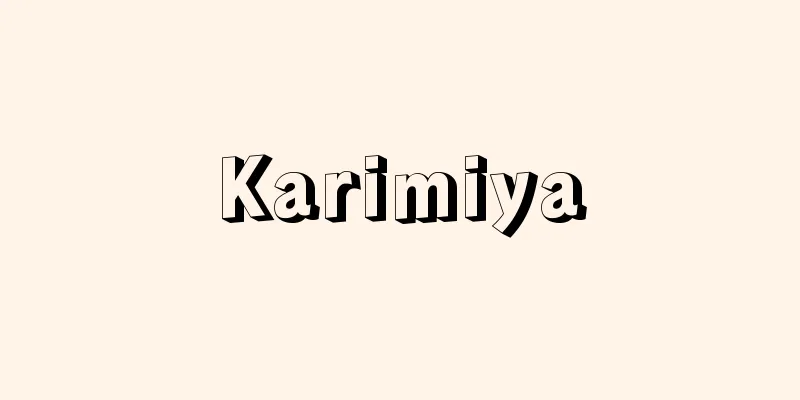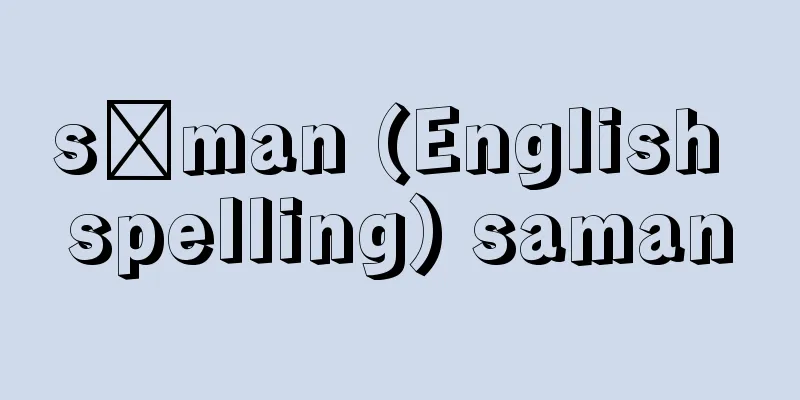Winnowing -

|
A farm tool used for threshing, sorting, adjusting, and transporting grains. The character for winnowing originally meant "square" with the characters "ki" and "kiji" (base) and in oracle bone script it referred to a large, flat, woven, square-shaped sieve-like tool, which originated in northern China and was introduced to Japan via Korea. In Japan, what appears to be a bamboo winnowing basket has been excavated from the Karako ruins in Nara Prefecture, and replicas of winnowing baskets used for brewing have been found among the grave goods in ancient tombs, suggesting that winnowing baskets have been used since ancient times. Usually, winnowing baskets are made of wisteria vines or willows placed vertically, hegi boards or split bamboo placed horizontally, woven into a mat, with one side open and the other three sides surrounded by wooden or bamboo rims. To use it, grains or beans are put into it, and while holding the edges with both hands and shaking it, the wind is used to separate the grains from the dust and rice husks (this is called hi). In producing areas, winnowing baskets are categorized according to their use; those used to process grains are called kokumi (grain winnowing baskets), those used for tea production are called tea winnowing baskets, those used for flour milling are called kona winnowing baskets, and those used for transporting soil and gravel are called zatsu winnowing baskets. Also, depending on the material they are made from, there are various types such as wooden winnowing baskets, leather winnowing baskets, bamboo winnowing baskets, and rattan winnowing baskets. Wooden winnowing baskets are made from boards up to the edges, while leather winnowing baskets are made by peeling the bark of a tree and folding it while it is still raw to form the winnowing basket. Bamboo winnowing baskets are made from bamboo, with the main part woven in a mesh or sieve pattern. The wisteria winnowing basket is made of Itaya, Urushi, and Shinodake with wisteria vines woven into it, and is strong and light, so it was used nationwide. There are sizes of winnowing baskets, such as 5sho, 1to, and 1to5sho, and they are often supplied by people who live in the mountains, such as Sanka, who are called winnowing craftsmen or winnowers. In the Tohoku region, such as Zunenko and Taranokidai in Yamagata Prefecture, there were places where the entire village made winnowing baskets as a business. On the other hand, there are many popular beliefs and incantations related to winnowing baskets. For example, turning a winnowing basket upside down means that misfortune will occur, and so people avoid it because it is considered bad luck to keep the winnowing basket upside down. In the Yamagata region, a winnowing basket filled with a one-sho measure is placed on the bride's head at the time of her wedding, and in fishing villages in Kagoshima Prefecture, there is a custom of setting up a winnowing basket at the entrance to a house during the day when the couple sleep together. It is well known that people buy a rake and a winnowing basket as souvenirs to the Tori Shrine in Asakusa, Tokyo, as good luck charms for business prosperity. In relation to winnowing baskets, the disc-shaped sieve called bara, used for threshing and harvesting from southern Kyushu to the southwestern islands such as Okinawa, is similar to a winnowing basket and is worthy of note. [Mizuo Miyamoto] Source: Shogakukan Encyclopedia Nipponica About Encyclopedia Nipponica Information | Legend |
|
穀物の脱穀、選別、調整、運搬に使用される農具。箕の文字は、本来、「其(き)、基」とともに「四角」を意味し、甲骨文では、平らに編んだ四角な大ざるのような用具のことで、この四角な箕が中国華北地域に発し、朝鮮を経て伝えられたものである。わが国では、奈良県の唐古(からこ)遺跡から竹製の箕と思われるものが出土したり、古墳の副葬品に醸造用の箕を模したものがみられ、箕が古くから使われていたことが察せられる。普通、箕は、藤(ふじ)づるやヤナギなどを縦とし、へぎ板や割り竹を横にして、むしろ編みにし、一方を開け口とし、他の三方は囲んで木や竹の縁をつける。使い方は、穀物や豆類などを入れ、両手で縁を持って揺り動かし、風にあおりながら穀物と塵埃(じんあい)や籾殻(もみがら)などをえり分ける(これを簸(ひ)るという)。箕は、産地ではその用途によって、穀物の調整に使われるものを穀箕(こくみ)、製茶用を茶箕、製粉用を粉(こな)箕、土運びや砂利運びに使うものを雑(ざつ)箕などといって区別している。また製作材料により、板箕、皮箕、竹箕、藤箕などの種類がある。板箕は縁まで板でつくり、皮箕は木の皮をはぎ、これを生(なま)のうちに折って箕の形にとじたもの。竹箕はタケで主要な部分を網代(あじろ)編みか、ざる編みにしたもの。藤箕はイタヤ、ウルシ、シノダケなどに藤づるを織り込んだもので、じょうぶで軽いので全国的に用いられた。箕は五升(しょう)箕、一斗(と)箕、一斗五升箕などの規格があり、箕つくり、箕なおしとよばれる山窩(さんか)など山に住む人々によって供給されることが多く、山形県の次年子(ずねんこ)、代(たらのきだい)など、東北地方には、村中が箕づくりを業としている所もあった。 一方、箕に関する俗信や呪法(じゅほう)も多く、たとえば、箕を裏返しにするのは不幸のあったときで、普段箕を裏返しにしておくと縁起が悪いといって忌み嫌った。また山形県地方では、嫁入りに一升枡(ます)を入れた箕を嫁の頭上にのせたり、鹿児島県の漁村で箕立てといって、昼間夫婦が同衾(どうきん)しているときには、箕を門口に立てるという習慣があった。東京浅草のお酉(とり)様の土産(みやげ)に商売繁盛の縁起物として、熊手(くまで)と箕を買ってくることはよく知られている。なお、箕との関係で、南九州から沖縄など南西諸島にかけて使われているバラとよぶ脱穀用・収穫用の網代円板形のざるは、箕に類似のもので、注目に値する。 [宮本瑞夫] 出典 小学館 日本大百科全書(ニッポニカ)日本大百科全書(ニッポニカ)について 情報 | 凡例 |
Recommend
General equilibrium theory
...While national income statistics observe the m...
Kaku Saiyu
He was a commander of the anti-Japanese volunteer...
Carnivores - Carnivorous animals
This refers to animals that consume animal food. ...
Kagetsu (Kagetsu) - Crassula portulacea; baby jade; cauliflower ears
A succulent plant of the Crassulaceae family. It i...
Towazugatari - Towazugatari
A diary from the late Kamakura period. Five volum...
APC (Physics) - APC
...This type of cracking occurs in bullet cartrid...
Rosenzweig, F.
...For example, Solomon Formstecher (1808-89) fol...
European Council
…the collective name for the three supranational ...
Summit conference
A conference where the highest government official...
Mercury nitrate - Shousansuigin
[ I ] Mercury nitrate(I): Hg2 ( NO3 ) 2 (525.19)....
Hersch Lauterpacht (English spelling)
1897‐1960 An Austrian-born British scholar of inte...
Calveriosoma gracile (English name) Calveriosomagracile
… [Minoru Imajima]. … *Some of the terminology th...
Oral teachings - Kuketsuha
…He studied Confucianism under Kaibara Ekiken and...
Platinum
... Periodic table Element symbol = Pt Atomic num...
Spinous process
…the neural arch has a large transverse process o...









